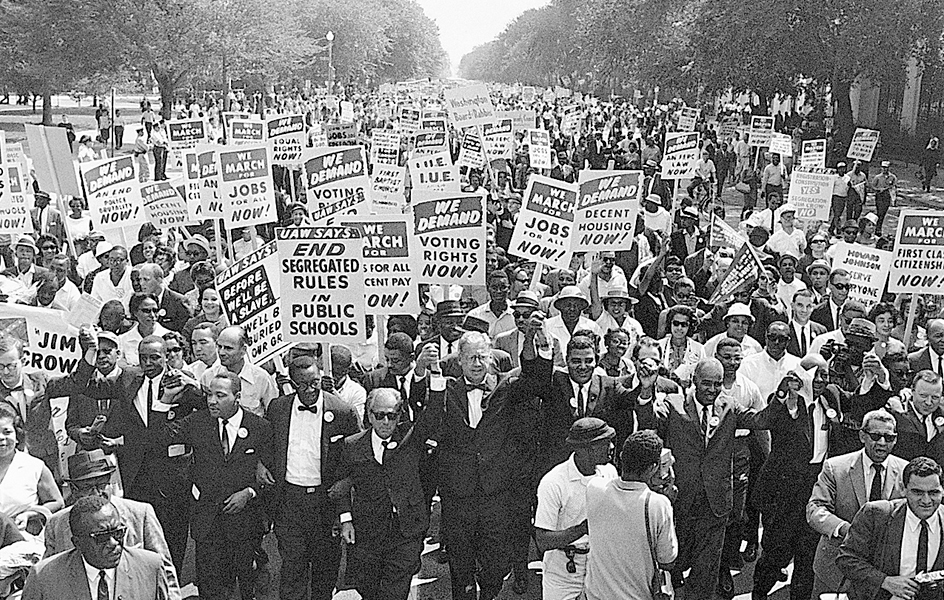March on Washington is a type of protest in which a group gathers in the United States capital of Washington, D.C. There, the marchers present grievances to lawmakers and draw attention to their cause. This article discusses one of the most famous of these marches, the 1963 March on Washington for Jobs and Freedom.

The U.S. civil rights movement began in the 1950’s. But by 1963, racial discrimination remained a problem in many cities and towns. Racial discrimination is unequal treatment based on race. African American leaders felt that the United States needed a clear, strong federal policy that would erase all remaining discrimination in public places. A number of these leaders, including Martin Luther King, Jr., and A. Philip Randolph, organized a massive march in Washington, D.C. The event was called the March on Washington for Jobs and Freedom. It was meant to bring attention to unemployment among Black workers and to urge Congress to pass President John F. Kennedy’s civil rights bill.

On Aug. 28, 1963, about 250,000 Americans, including many white people as well as Black Americans, marched from the Washington Monument to the Lincoln Memorial. It was the largest demonstration of the American civil rights movement. The event ended with a program of speakers, including the civil rights leaders John Lewis, Bayard Rustin, Roy Wilkins, and Whitney Young and the labor leader Walter Reuther. The event also featured the music of Marian Anderson, Joan Baez, Bob Dylan, Mahalia Jackson, and the trio Peter, Paul, and Mary.
The high point of the rally was a stirring speech by King. King told the crowd that he had a vision of a United States that was not divided along racial lines. The nationally televised address became known as King’s “I Have a Dream” speech. It is considered one of the greatest speeches in history. For many people, it has come to symbolize the civil rights movement.
Loading the player...Excerpt from the speech “I Have a Dream,” by Martin Luther King, Jr.
Afterward, Kennedy proposed strong laws to protect the civil rights of all U.S. citizens. Kennedy was assassinated in November 1963, and Vice President Lyndon B. Johnson became president. Johnson persuaded Congress to pass Kennedy’s proposed laws in the Civil Rights Act of 1964.
